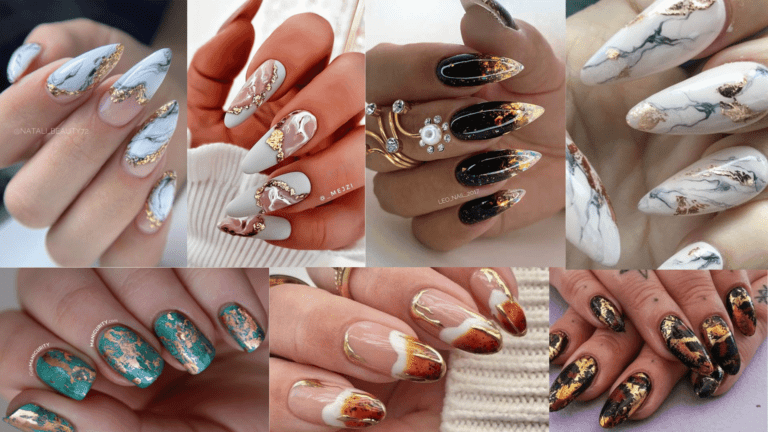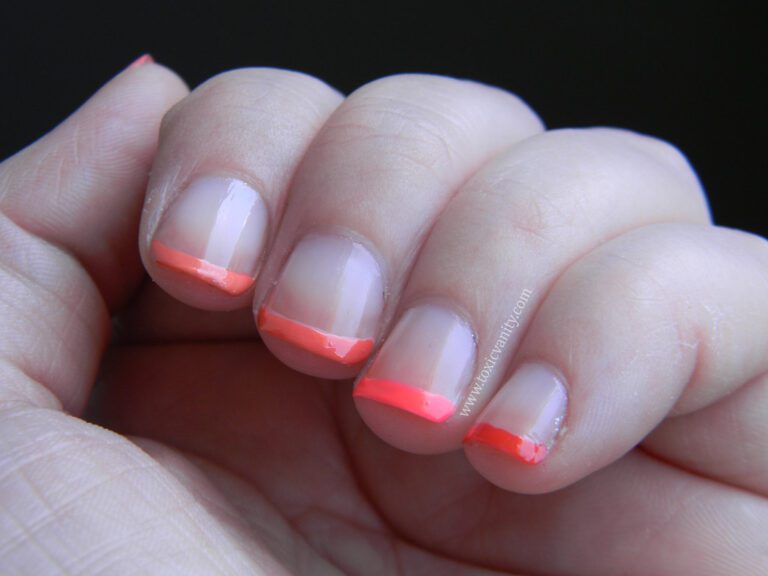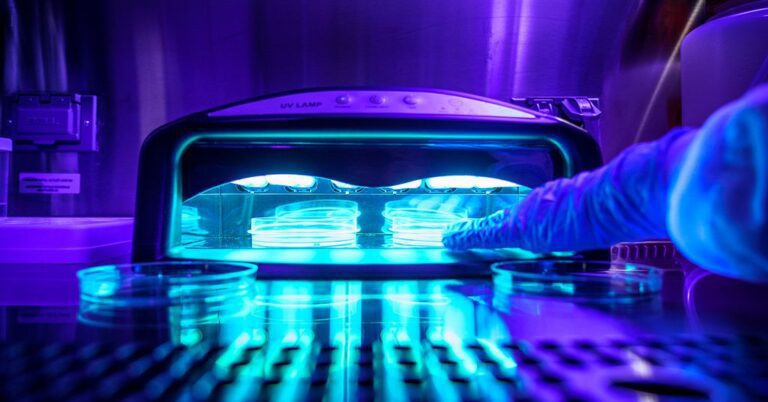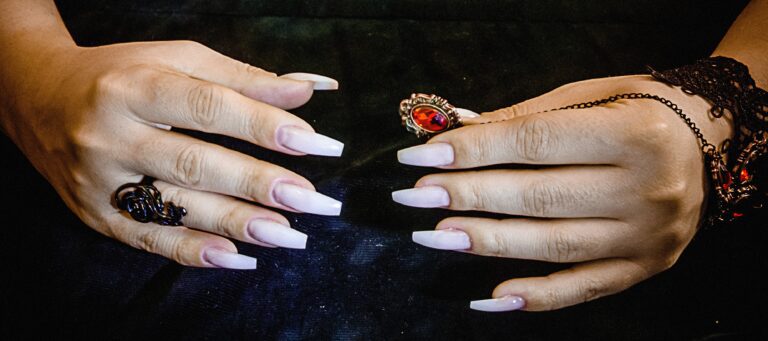“Blue or Not Blue: When Nails Turn Blue Explored”
In the article \
Key Takeaways
- Understanding the science behind cyanosis helps in recognizing the significance of blue nails as a symptom.
- Respiratory conditions such as asthma and chronic obstructive pulmonary disease (COPD) can cause nail discoloration.
- Clinical assessment, laboratory tests, and imaging techniques are essential for diagnosing the underlying conditions of blue nails.
- Seek medical attention if blue nails are accompanied by shortness of breath, chest pain, or dizziness.
- Treatment options for cyanotic conditions include oxygen therapy, medications, and lifestyle modifications.
Understanding Cyanosis: The Science Behind Blue Nails

Defining Cyanosis
Cyanosis is characterized by a bluish discoloration of the skin and nails, which is a telltale sign of insufficient oxygenation of the blood. This condition can be observed when hemoglobin, the oxygen-carrying component of blood, is depleted of oxygen, causing it to take on a darker hue.
The term ‘cyanosis’ comes from the Greek word ‘kyanos’, meaning dark blue, and is a clinical indicator that the body is not receiving enough oxygen. It is important to distinguish cyanosis from other causes of blue discoloration, such as certain dyes or medications, which do not reflect an underlying oxygenation problem.
Tip: Always consider the possibility of non-medical causes for blue nails, such as exposure to pigments or cold temperatures, before assuming a medical condition.
Physiological Mechanisms
The phenomenon of nails turning blue, medically known as cyanosis, is a result of an inadequate supply of oxygen to the body’s tissues. This condition occurs when there is an increased amount of deoxygenated hemoglobin, which has a dark bluish-red color, circulating in the blood. The change in color is most noticeable in areas with a high density of capillaries, such as under the nails.
The physiological mechanisms behind cyanosis can be broadly categorized into two main processes:
- Reduced oxygenation of blood in the lungs due to respiratory issues or high altitudes.
- Poor blood circulation which can be caused by heart failure, shock, or peripheral vascular disease.
In some cases, the body’s ability to carry oxygen may be compromised due to the presence of abnormal hemoglobin variants, such as methemoglobin or sulfhemoglobin. These variants alter the blood’s color and reduce its oxygen-carrying capacity, leading to cyanosis even when oxygen levels are normal.
Tip: If experiencing blue nails along with symptoms like shortness of breath or chest pain, it is crucial to seek medical attention promptly as these could indicate serious underlying conditions.
Types of Cyanosis
Cyanosis is the bluish-purple discoloration of the skin due to reduced oxygen concentration in the blood. It can be categorized into two main types: peripheral cyanosis and central cyanosis. Peripheral cyanosis is often caused by reduced blood flow to the extremities, while central cyanosis is indicative of decreased oxygen saturation in the central circulation. Here’s a brief comparison of the two types:
| Type of Cyanosis | Location of Discoloration | Cause |
|---|---|---|
| Peripheral Cyanosis | Fingertips, toes, lips | Reduced blood flow to extremities |
| Central Cyanosis | Mucous membranes, trunk | Decreased oxygen saturation in central circulation |
Central cyanosis is a more serious condition that requires immediate medical attention. If you notice central cyanosis, seek medical help without delay. It may indicate a severe underlying health issue that needs prompt evaluation and treatment.
Common Causes of Nail Discoloration

Respiratory Conditions
When nails turn blue, it may be a sign of an underlying respiratory condition affecting the body’s ability to take in oxygen. Conditions such as chronic obstructive pulmonary disease (COPD), asthma, and pneumonia can lead to cyanosis, which is the medical term for the bluish discoloration of the skin and nails. These conditions can impair the lungs’ function, resulting in decreased oxygen levels in the blood.
- Early detection and management of respiratory issues are crucial. * Here’s a list of common respiratory conditions that can cause blue nails:
- Chronic Obstructive Pulmonary Disease (COPD)
- Asthma
- Pneumonia
- Bronchitis
- Emphysema
If you notice a blue tint to your nails and have difficulty breathing, it’s important to seek medical attention promptly. This could be a sign that your body is not receiving enough oxygen.
Cardiovascular Issues
Cardiovascular issues can lead to nail discoloration, particularly due to reduced blood flow or oxygenation. This can result in a bluish tint in the nails, known as cyanosis. It is important to monitor for other symptoms of cardiovascular problems, such as chest pain, shortness of breath, and dizziness.
Exposure to Cold
Exposure to cold can lead to nail discoloration, particularly in individuals with poor circulation. Protecting against cold is essential for preventing cyanosis and maintaining healthy nail color. This includes wearing gloves in cold weather, using hand warmers, and avoiding prolonged exposure to low temperatures. Additionally, regular health check-ups can help monitor nail color changes and identify any underlying conditions.
Diagnosing the Underlying Conditions

Clinical Assessment
A thorough clinical assessment is the first step in diagnosing the underlying conditions that may cause nails to turn blue. During the assessment, healthcare professionals will take a detailed medical history and perform a physical examination. They will look for signs of cyanosis and other symptoms that may indicate respiratory or cardiovascular issues.
The physical examination will focus on the nail beds and skin, but will also include checking the patient’s vital signs, such as heart rate and blood pressure. Auscultation of the lungs and heart is also performed to detect any abnormal sounds that could suggest a problem.
Here are some key aspects of a clinical assessment:
- Observation of the patient’s general appearance and color
- Examination of the nail beds for blueness or other discoloration
- Checking for signs of respiratory distress or cardiac abnormalities
- Measurement of vital signs
Tip: Always report any changes in nail color or associated symptoms to your healthcare provider promptly, as they could be signs of a serious condition.
Laboratory Tests
Laboratory tests play a crucial role in the diagnosis of conditions that may cause nails to turn blue. These tests can provide valuable information about the levels of oxygen in the blood and the functioning of the respiratory and cardiovascular systems. A common test is the measurement of arterial blood gases (ABG), which assesses the levels of oxygen and carbon dioxide in the blood and helps determine the efficiency of gas exchange in the lungs.
Another key investigation is the complete blood count (CBC), which can reveal signs of anemia or infection that might contribute to cyanosis. For a comprehensive understanding, doctors may also order tests to evaluate blood clotting function and the presence of abnormal hemoglobin variants.
Tip: Always consult with a healthcare professional before interpreting laboratory results, as they require expert analysis in the context of your overall health.
Imaging Techniques
Imaging techniques play a pivotal role in the diagnosis of conditions that may cause nails to turn blue. These methods provide a visual representation of the body’s internal structures, allowing clinicians to detect anatomical abnormalities or signs of infection and inflammation. Among the most commonly used imaging techniques are X-rays, computed tomography (CT) scans, and magnetic resonance imaging (MRI) scans. Each of these has its specific applications and advantages in various clinical scenarios.
- X-rays are often the first imaging technique employed due to their wide availability and speed in delivering results. They are particularly useful for assessing bone abnormalities.
- CT scans offer a more detailed view of the body’s internal structures and are excellent for detecting subtle differences in tissue density.
- MRI scans provide the best soft tissue contrast and are invaluable when the clinical question involves soft tissue structures or the presence of complex conditions.
Tip: It’s important for patients to inform their healthcare provider of any existing implants or devices, as these can affect the choice of imaging technique.
The choice of imaging technique will depend on the suspected underlying condition, the patient’s medical history, and the clinical judgment of the healthcare provider. Regular monitoring through diagnostic imaging can also be crucial in assessing the effectiveness of treatment for cyanotic conditions.
When to Seek Medical Attention

Symptoms to Watch For
When observing the nails for signs of cyanosis, it’s important to pay attention to the color changes and any associated symptoms. Blue discoloration, along with shortness of breath, dizziness, and confusion, may indicate severe oxygen deprivation. It’s crucial to seek immediate medical attention if these symptoms are present. Additionally, monitoring the oxygen saturation levels using a pulse oximeter can provide valuable insights into the severity of the condition. Regularly checking for these symptoms and seeking prompt medical care is essential for managing cyanotic conditions.
Risk Factors
Understanding the risk factors for nail discoloration, particularly when nails turn blue, is crucial in identifying potential underlying health issues. Certain individuals may be more predisposed to experiencing cyanosis due to inherent or environmental factors. Key risk factors include:
- Genetic predispositions to conditions like Raynaud’s disease or congenital heart defects.
- A history of respiratory issues, such as asthma or chronic obstructive pulmonary disease (COPD).
- Cardiovascular problems, including heart failure or peripheral arterial disease.
- Lifestyle choices, such as smoking, which can impair circulation and oxygenation.
- Exposure to extreme cold, which can trigger a cyanotic response.
Tip: Individuals with known risk factors should be particularly vigilant about changes in nail color and seek medical advice promptly if they notice any discoloration.
It’s important to note that while some risk factors are modifiable, others, such as genetic conditions, require careful monitoring and management. Recognizing these risk factors can aid in early detection and intervention, potentially mitigating the severity of any underlying conditions.
Emergency Situations
In the context of blue nails, certain scenarios demand immediate medical attention. Cyanosis can be a sign of serious underlying health issues that require urgent care. If blue nails are accompanied by symptoms such as difficulty breathing, chest pain, or altered mental status, it is crucial to seek emergency services.
- Difficulty breathing
- Chest pain
- Altered mental status
- Sudden onset of cyanosis
- Cyanosis not improving with warming or oxygen
Tip: Always err on the side of caution. If you’re unsure whether a situation is an emergency, it’s better to seek medical help than to wait.
Recognizing these emergency situations can be lifesaving. It is essential to act swiftly and contact emergency services or get to a hospital immediately. Timely intervention can make a significant difference in outcomes for conditions associated with cyanosis.
Treatment Options for Cyanotic Conditions

Oxygen Therapy
Oxygen therapy plays a pivotal role in the treatment of cyanotic conditions, where the body’s tissues are deprived of adequate oxygen. By increasing the concentration of oxygen in the blood, this therapy can alleviate symptoms and improve overall health.
The primary goal of oxygen therapy is to ensure that sufficient oxygen reaches the body’s tissues. It can be administered in various settings, from hospitals to home care, and involves the use of devices such as nasal cannulas or oxygen masks. For more severe cases, mechanical ventilation may be required.
Patients undergoing oxygen therapy may experience different protocols based on their specific needs. Here’s a simplified overview:
- Initial Assessment: Determining the patient’s oxygen levels.
- Supplemental Oxygen: Adjusting the flow rate to achieve desired oxygen saturation.
- Monitoring: Regular checks to ensure therapeutic effectiveness.
- Adjustments: Modifying treatment based on patient response.
Tip: Consistent monitoring of oxygen levels is crucial to avoid complications such as oxygen toxicity or hypoxemia.
Medications
In the treatment of cyanotic conditions, the use of medications plays a crucial role in managing symptoms and addressing the underlying causes. Depending on the specific diagnosis, a variety of drugs may be prescribed to improve oxygenation and blood flow.
- Vasodilators are often used to widen blood vessels, enhancing circulation.
- Anti-coagulants may be prescribed to prevent blood clots, which can obstruct blood flow and exacerbate cyanosis.
- In cases of congenital heart defects, certain medications can help manage the condition until surgery is possible or as an ongoing treatment.
It is essential to follow the prescribed medication regimen closely and to communicate with healthcare providers about any side effects or concerns.
Adjustments to medication types and dosages are sometimes necessary, and these should always be made under medical supervision. Regular monitoring and follow-up appointments are key to ensuring the effectiveness of the treatment plan.
Lifestyle Modifications
After implementing lifestyle modifications, it is important to focus on regular health check-ups and monitoring oxygen saturation. These measures are crucial for tracking progress and ensuring the effectiveness of the changes made. Additionally, it is advisable to protect against cold temperatures to prevent exacerbation of symptoms.
Preventive Measures and Monitoring

Regular Health Check-ups
Regular health check-ups are crucial for monitoring the overall health of your nails and identifying any potential issues early on. During these check-ups, your healthcare professional can assess the condition of your nails, check for signs of discoloration, and provide guidance on preventive measures. Maintaining a healthy lifestyle and practicing good nail care habits are also essential for preventing nail discoloration and maintaining overall nail health. Here are some key points to keep in mind during your regular health check-ups:
- Schedule regular appointments with a healthcare professional to monitor the condition of your nails.
- Discuss any concerns or changes in your nails with your healthcare provider.
- Follow a balanced diet and stay hydrated to promote healthy nail growth and strength.
- Protect your nails from harsh chemicals and excessive moisture to prevent damage and discoloration.
Remember, early intervention and proactive monitoring are key to maintaining the health and appearance of your nails. Keep an eye on any changes and seek professional advice if you notice persistent discoloration or other abnormalities.
Protecting Against Cold
When it comes to protecting against cold, it’s essential to dress warmly and in layers to maintain body heat. Wearing gloves and thick socks can help prevent heat loss from the extremities. Additionally, staying hydrated and consuming warm beverages can aid in maintaining internal body temperature. It’s also important to avoid prolonged exposure to cold temperatures and seek shelter when necessary. Lastly, practicing good hygiene, such as regular handwashing, is crucial for preventing the spread of cold and flu viruses.
Monitoring Oxygen Saturation
After monitoring oxygen saturation, it is important to regularly check your oxygen levels to ensure they remain within a healthy range. This can be done through the use of a pulse oximeter, a noninvasive device that measures the amount of oxygen saturation in the blood. Here are some factors that can affect the accuracy of pulse oximetry readings:
- Skin pigmentation and thickness
- Current tobacco use
- Presence of nail polish
It’s crucial to be aware of these factors when using a pulse oximeter to monitor oxygen saturation. Remember, maintaining optimal oxygen levels is essential for overall health and well-being.
When it comes to nail care, preventive measures and monitoring are essential for maintaining healthy and beautiful nails. At NAILinspire.com, we provide the ultimate online nail art design library to inspire and guide you in your nail care journey. Whether you’re a nail art enthusiast or someone looking to improve the health of your nails, our collection of designs, tutorials, and tips has something for everyone. Visit NAILinspire.com today and take the first step towards healthier, more beautiful nails.
Frequently Asked Questions
What causes nails to turn blue?
Nails turn blue due to a lack of oxygen in the blood, a condition known as cyanosis. This can be caused by various underlying health issues such as respiratory or cardiovascular problems.
Are blue nails always a sign of a serious health condition?
Not necessarily. While blue nails can indicate a lack of oxygen in the blood, they can also be caused by other factors such as exposure to cold or certain medications. However, it’s important to seek medical attention to rule out any serious underlying conditions.
How is cyanosis diagnosed?
Cyanosis is diagnosed through clinical assessment, laboratory tests, and imaging techniques. These methods help to determine the underlying cause of the condition and guide appropriate treatment.
What are the emergency situations associated with blue nails?
Emergency situations related to blue nails include severe shortness of breath, chest pain, dizziness, and loss of consciousness. These symptoms require immediate medical attention.
What are the treatment options for cyanotic conditions?
Treatment options may include oxygen therapy, medications to address the underlying cause, and lifestyle modifications to improve oxygen levels in the blood.
How can blue nails be prevented?
Preventive measures include regular health check-ups to monitor for any underlying health issues, protecting against cold temperatures to prevent vasoconstriction, and monitoring oxygen saturation levels in the blood.







